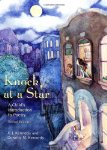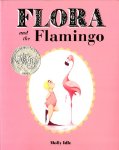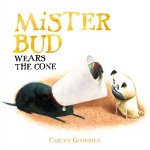Over the years I have looked at a lot of poetry collections. Some focus on one kind of poetry, or one topic, while others are collections of all kinds of poetry. Today's title belongs to the latter category, and I have to say that it is one of the best collections of this type that I have ever looked through. Poetry as a form of writing is explored in an interesting way, and readers of all ages will enjoy reading the poems and the sections of text that accompany many of them.
 Knock at a star: A Child’s Introduction to Poetry
Knock at a star: A Child’s Introduction to Poetry
X. J. Kennedy and Dorothy Kennedy
Illustrated by Karen Lee Baker
Poetry
Ages 7 and up
Little Brown, 1999, 978-0316488006
Many people have created poetry anthologies for children,
and such collections give children the opportunity to experience and explore a
wide variety of poems. Readers can open such books on any page and start
reading.
This poetry
collection is a little different in that the poems are categorized into
chapters. The authors use poems to show readers what poems do, what is inside a
poem, the special kinds of poems there are, and they wrap up by showing us how
to write our own poems. Throughout the book readers will find notes that help
them better understand the poems and the people who wrote them.
The purpose of
poems may seem obvious, but in fact poems, like stories, can serve a variety of
purposes. They can make readers smile either because they describe something
funny, or because the poet uses words in a funny way, or both of these things. In
Spring is Sprung, a poet deliberately
used words incorrectly to give us a poem that is short and amusing. Ogden
Nash’s The Termite tells us a short
tale about how a termite tasted wood “and found it good.” We learn that the
termite’s fondness for wood explains why “Cousin May / Fell through the parlor
floor today.”
Telling stories
using poetry is something many poets enjoy doing. These stories can be humorous
or serious, and they help readers see that story poems can be just as colorful
and exciting as stories that are told in prose.
Some poets like
to use their poems to convey a message to their readers, presenting an idea or
point of view that matters to them. Then there are the poems that allow their
writers to share their feelings with the reader. Often these poems are very
powerful because they are personal and heart felt. In Janet S. Wong’s poem Losing Face we read about a guilt-ridden
girl who won an art contest using a picture that she traced. She so much wants
to tell everyone what she did, but she doesn’t “want to lose / Mother’s glowing
/ proud face.”
People can often
be confusing. We don’t understand why they say and do the things they do. Some
poets use their writings to help us understand people and their ways. Through
them we learn that people come in so many shapes, sizes, colors, and flavors.
For example, in her poem My Mother we
learn about a mother who is not “like / Some others.” Instead of being the kind
of mother who bakes and cooks, this mother stays up late into the night
“Reading poetry.”
This is the kind
of poetry collection that readers of all ages will enjoy exploring. Even adults
who know a great deal about poetry will soon appreciate that this collection is
truly a gift.
 Flora and the Flamingo
Flora and the Flamingo







